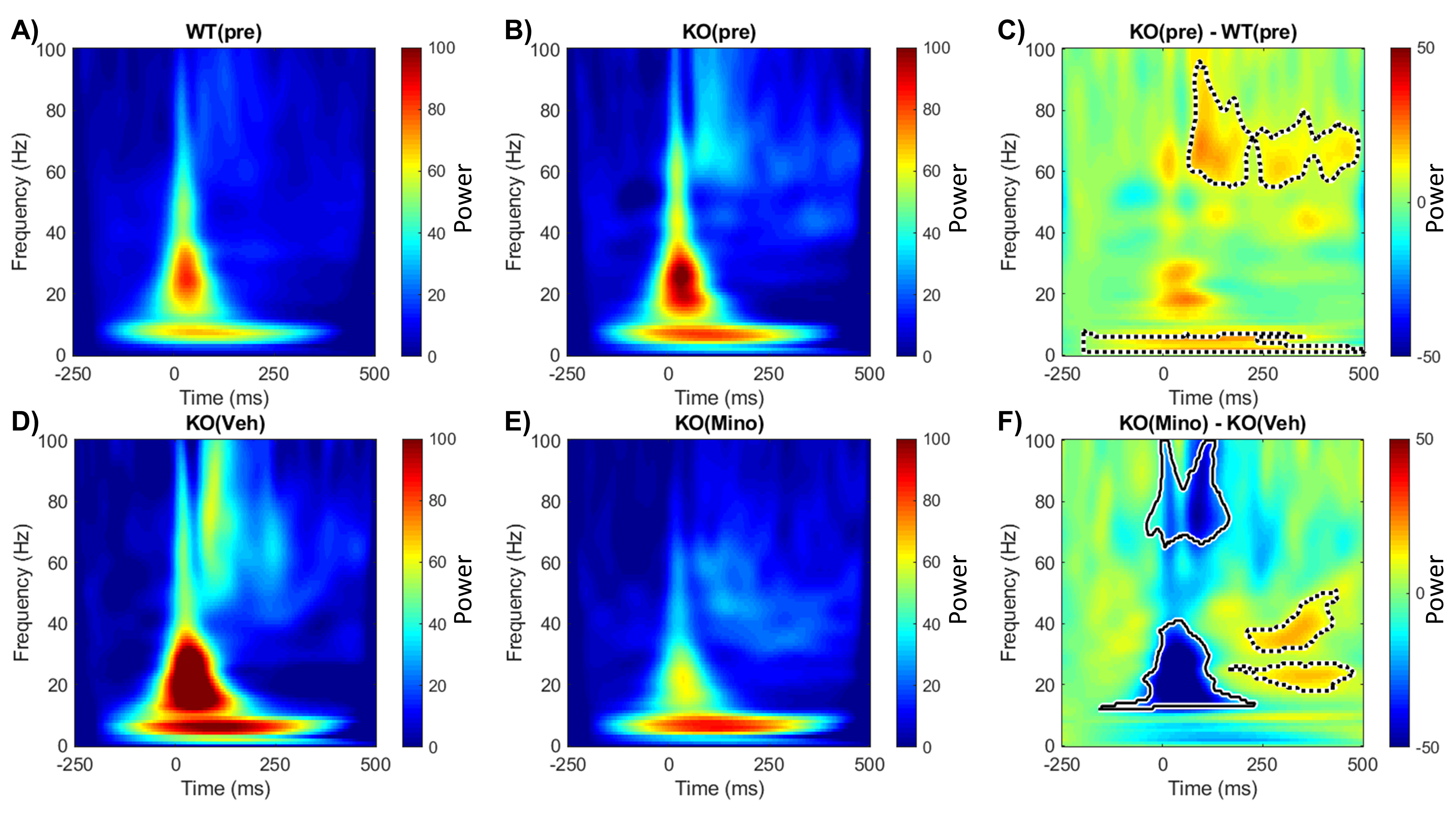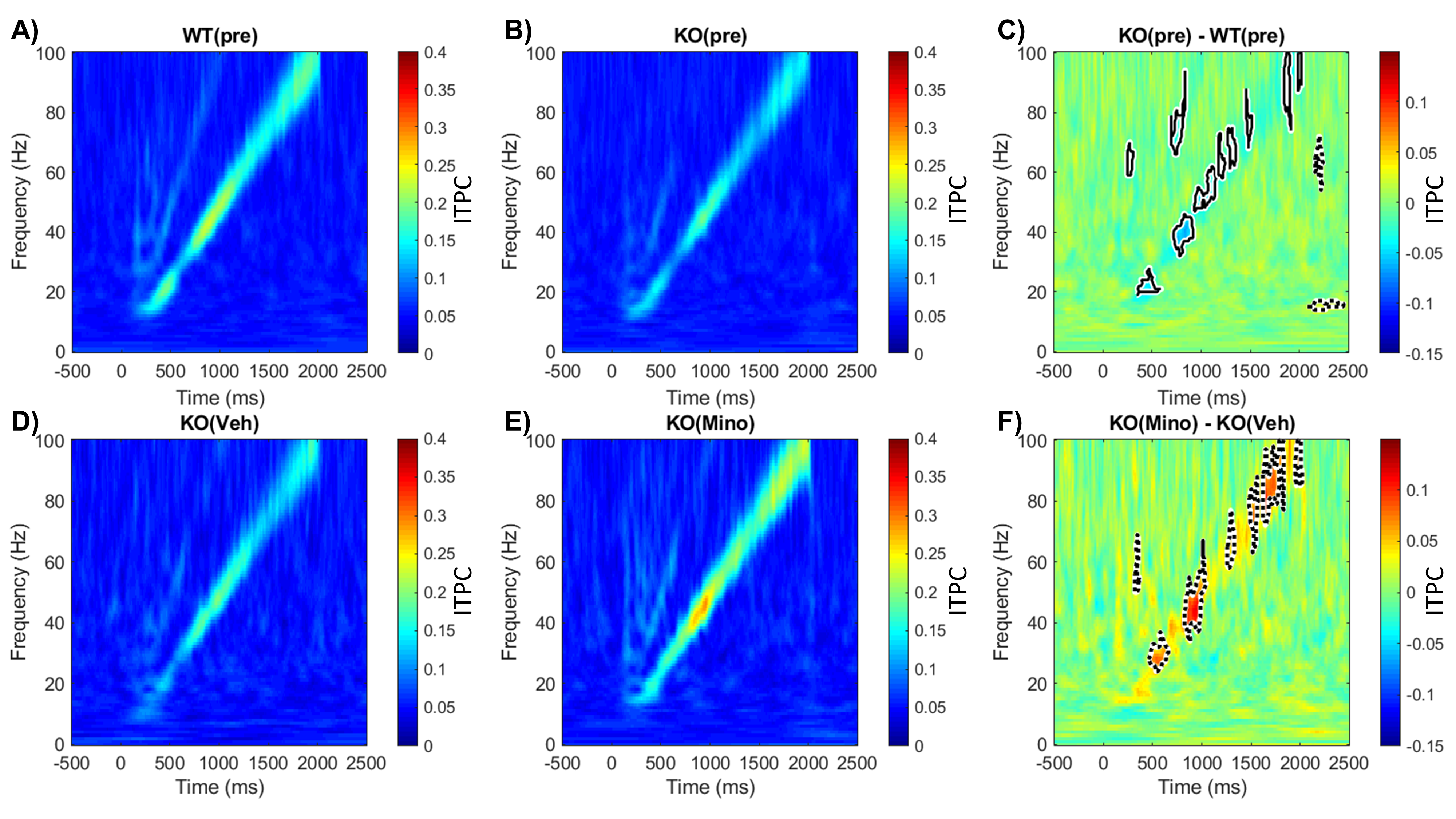
With a $90,000 grant from FRAXA Research Foundation, Postdoctoral Fellow Jonathan W. Lovelace, PhD, and Principal Investigator, Khaleel Razak, PhD, at University of California, Riverside have developed EEG-based biomarkers and used them to demonstrate effectiveness of minocycline, alone and in combination, in mice bred to mimic Fragile X syndrome.
Research Grant Lay Summary
Individuals with Fragile X syndrome, and often autism, are hypersensitive to things in their environment, in this specific case, sounds. All of these experiences of sounds, sights, and smells are happening in our brains constantly all the time, but in certain genetic variations (like Fragile X), the brain circuits don’t connect or behave the way you would expect, and all those sensations are amplified and can’t be blocked out. There is no peace and quiet, like we might experience.
These studies aim to find a drug, or combination of drugs, that could give some peace and quiet for individuals who have this disorder. And the results of these studies, as detailed below, point to promising candidates.
Objective Outcome Measures are Essentional to Evaluate Fragile X Treatments
The Fragile X field needs reliable, unbiased, and relevant biomarkers to assess potential treatments, first in mice and then for human patients. One of Dr. Lovelace and Dr. Razak’s most important discoveries is a striking similarity in EEG biomarkers between mice and humans. They published a 2018 paper describing sound-driven EEG biomarkers in Fragile X mice. The consensus of basic scientists and clinicians who work with individuals with Fragile X syndrome at Cincinnati Children’s Hospital is that FMR1-KO mice and humans with the syndrome have larger than normal brain responses to sounds, and also that both mouse and human responses are more noisy and less consistent.
Testing Minocycline Alone and as Part of Combination Treatment
Once they established these outcome measures, Lovelace moved forward with testing potential drugs in mice to see if those measurements could be shifted in a therapeutic direction compared to controls. FRAXA funding allowed Lovelace and Razak to test minocycline, an FDA-approved drug that has gained a lot of attention over the years as a potential treatment for FXS. Lovelace is currently writing a paper based on data showing that minocycline performs better than controls in mice on several auditory measures.
Lovelace and Razak have now also collected a complete data set looking at all these same outcome measures comparing groups of mice which received CTEP (an mGluR5 antagonist), or both minocycline and CTEP at the same time, to determine possible benefits of combination drug treatment. Analysis and writing up this vast amount of data is underway. They also plan present these exciting results at the 2020 Fragile X and Autism Gordon Research Conference.
Finding drugs that can be shown to work in an objective manner, and using measures where mouse results strongly align with research done in humans, will allow Lovelace and Razak to determine the best candidate drugs, or combinations, to reduce symptoms of auditory hypersensitivity in patients with FXS. They are now confident that EEG measures in animal models and humans will play a significant role in drug discovery for Fragile X syndrome.

Figure 1: Event Related Potentials (ERPs) in response to sound bursts
The biomarker in Figure 1 measures the “power” or magnitude of Event Related Potentials (ERPs) in response to sound bursts.
(A) Group mean of Wild Type (control mice) before drug admin. (B) Group mean of FMR1-KO (fragile X mice) before drug admin. (C) By subtracting B-A, we compare a group of KO mice to their WT control group. Hotter colors indicate brain responses that have more power, or larger magnitude in FMR1-KO mice.
(D) Group means of KO after treatment with control vehicle. (E) Group means of KO after minocycline. (F) By subtracting E-D, we find that the FMR1-KO mice have strong statistically significant decreases in ERP power (cooler areas) after treatment with minocycline which outperforms vehicle control tested mice.

Figure 2: Response to “chirp” before and after drug treatment
Figure 2 is an outcome measure using a sound called a “chirp”, the same kind of sound that has also been presented to human patients.
(A) Group mean of WT before drug admin. (B) Group mean of KO before drug admin. (C) By subtracting B-A, we compare a group of FMR1-KO mice to their Wild Type (WT) control group. Areas in blue indicate brain responses that are less consistent in the FMR1-KO mice.
(D) Group mean of KO after vehicle. (E) Group mean of KO after minocycline. (F) By subtracting E-D, we find that the FMR1-KO mice have statistically significant increases in the consistency to brain responses after treatment with minocycline. This is above and beyond treatment with a vehicle control substance, the beneficial effects are shown by areas in red.

